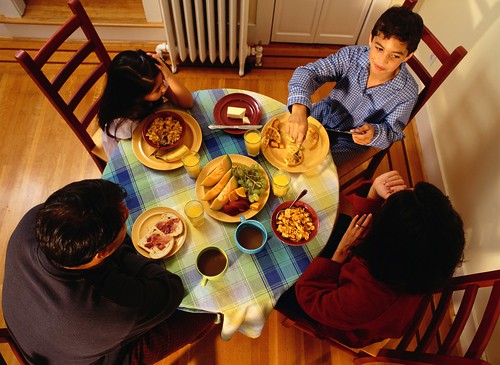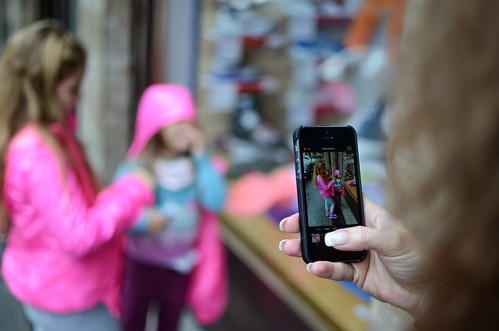Over at Eduro Learning we’re working hard to help parents, teachers and schools thrive in the digital age. One of the new things we’re most excited about is our new series of online classes and resources designed specifically for parents. We know that parenting in a technology-rich world is not easy, and after having worked with parents for the last 15 years (as social media has boomed) we have lots of great ideas, strategies and tips to make it easier for you!
Over the next few weeks, we’re going to be sharing some of those resources (for free!) to give you a taste of what the Parenting in the Digital Age course is like, and as usual, we’re going to be doing a weekly Facebook Live session to give you the inside scoop.
This week is my turn, so I thought I’d share some of my thinking here as a mini-preview to the FB Live on Thursday, and the resource that we’re sharing (for free!) this week: 7 Things Parents Need to Know About Kids and Tech. (Oh and btw: if you’ve already shared your e-mail with us, don’t worry, this won’t add you to our newsletter twice, it will just help us know which resources are most useful for you, so we can send you the right stuff).
Side note for teachers: if you have any parents in your classroom that would benefit from these kinds of resources, please share! Or, are you regularly having conversations with parents about these topics? You might find these resources super relevant too!
One of the things we know that parents struggle with is the idea that learning looks different today. The problem is, we’ve all been through school. Many of us are quite successful. So, if that schooling experience worked for us, then it should work for our kids too, right? Not so much. The thing is, learning looks different today, because society is different today. Our job as educators is to ensure that our learning environment reflects reality, not the adult recollection of what school should be. As John Dewey so eloquently said, “If we teach today as we taught yesterday, we rob our children of tomorrow.”
It’s not just me and John Dewey, either, there is lots of research demonstrating that the skills needed for tomorrow’s workforce are different, including The Institute for the Future: 2020 Future Work Skills and the World Economic Forum 10 Skills You Need to Thrive in the Fourth Industrial Revolution. So, if the skills we need to be successful are different, that means that the learning experience should be different too.
Here are my top five ways that learning is different today.
1.It’s not about content. It’s about understanding.
When I went to school, it was all about how much content I could memorize and restate back to the teacher on a test. Sometimes I got lucky and was able to make a poster, or a diorama, and my fifth grade science fair really sticks out in my mind. But other than that, I don’t remember much, because it was all about the content for the test, and not so much about making sense and understanding that content within a wider context.
Today’s learning is about demonstrating understanding. Facts are at our fingertips, they’re only just a Google away. But understanding what those facts mean, making connections to today’s world, to previous learning, and to other subject areas – those skills are far more valuable than factual recall.
2. Learning is Always On
Having access to technology (particularly the internet) means learning doesn’t have to stop when we leave the classroom. Students are pursuing independent interests outside school through all sorts of digital means, especially YouTube. Access to the internet means they can learn whatever they want to learn, whenever they want. They can get content that exactly at the right level for their skills, knowledge and understanding, and progress at their own pace. And they can do it whenever they want, about whatever they want. This is individualized learning.
Schools are tapping into that power by providing a 1:1 program (where schools provide, or require, each student to bring a laptop), and enabling and expecting teachers to create a blended learning environment, which means teaching and learning happens both within the classroom environment and online, through the use of all sorts of different tools, the current popular tool is Google Classroom (but there have been plenty of others in the past, and there will be more in the future). A blended classroom model, especially when combined with a 1:1 program, means that learning is accessible anytime, anywhere.
3. It’s About Creating, Not Consuming
Technology provides so many new and innovative ways to demonstrate learning – from interactive videos, to long form writing, to interactive representations of complicated data – that learning today is not about how much you can consume, but what you can create with the knowledge and understanding you have developed.
Instead of demonstrating knowledge by taking tests, schools and teachers are developing new and unique ways for students to demonstrate their understanding using media-rich tools, like video, games and even social media. Students are building biomes in Minecraft, participating in ongoing Twitter debates as historical figures, creating collaborative videos with their classmates, and writing books with collaborative partners in another country for release online (in Kindergarten!).
Having access to high powered devices, and the internet, allows students to create authentic products that real-world professionals would create, and then share them with an audience beyond the classroom (more on that in a minute) rather than just filling out worksheets, tests or writing an essay that only the teacher will read.
4. Sharing is BIG
Whether or not we like it, sharing is in. From Instagramming your lunch to maintaining a Snapchat streak with a friend, almost all teens today are sharing their lives in one form or another. And they’re expecting (and building) an authentic audience for what they share. It’s not enough to just produce content for your teacher (or your classmates) anymore (if it ever was). The goal is to produce something of value for an authentic audience who will actually appreciate that product.
The reality is, as much as teachers like having students create new and unique products to demonstrate their learning, the most important part is having a purpose to the learning. Having a clear understanding of why they are learning, and who they will be demonstrating their learning to, is not only motivational and empowering, but it provides a clear value for the time and energy they spend in both the learning and content production.
5. Interaction and Community are Key
Along with all of this sharing that is quickly becoming part of our culture, and expected as the norm, is the importance of community in the digital space. When we (students and teachers alike) are learning in online spaces, we are becoming part of a community of learners – from women interested in lifting heavy weight to being a first-time home-owner with lots of renovations, we’re finding digital spaces that support us in our learning needs, and they are filled with people who want to interact and learn together.
We are able to learn from experts in the field by following them on Instagram, Facebook and Snapchat, and in those spaces, we’re able to comment and ask questions – and we expect a response. There’s a culture of personal, peer-to-peer connections and conversations that is building in digital spaces. And it’s this interaction, this feeling of community, that helps us feel like we’re on a learning journey together, even though it’s self-directed and individualized for each person involved.
Building this feeling of community in the physical classroom space is not new, for sure, but building that feeling in digital spaces is, and it’s more important than ever.
Final Thoughts
These are just my top five ways that learning is different today. What do you think? Is there something critical that I missed? If you’re a parent, what do you struggle with? How do you feel about these changes?
If you’re interested in continuing this conversation (or you know someone who might be interested), please join me this Thursday for another Facebook Live session on our Eduro Learning FB page:
Image Credits:
- Sunset jump by Garret LeSage, CC licensed on Flickr
- Family Dinner by USDA, CC licensed on Flickr
- IMG_4590 by Tom Woodward, CC licensed on Flickr
- Kobe drawing by Marcus Kwan, CC licensed on Flickr
- Laptop in tree by Ken Colwell, CC licensed on Flickr
- 18.not yet obsolete by Rosipaw, CC licensed on Flickr
- Family Portrait by Andrea Caligaris, CC licensed on Flickr
- Community by Ian Sane, CC licensed on Flickr













2 thoughts on “5 Ways Learning is Different Today (for Parents)”